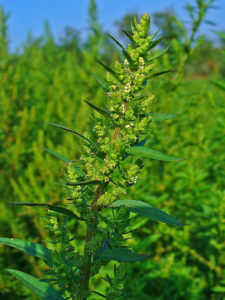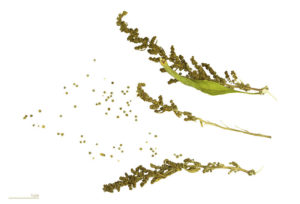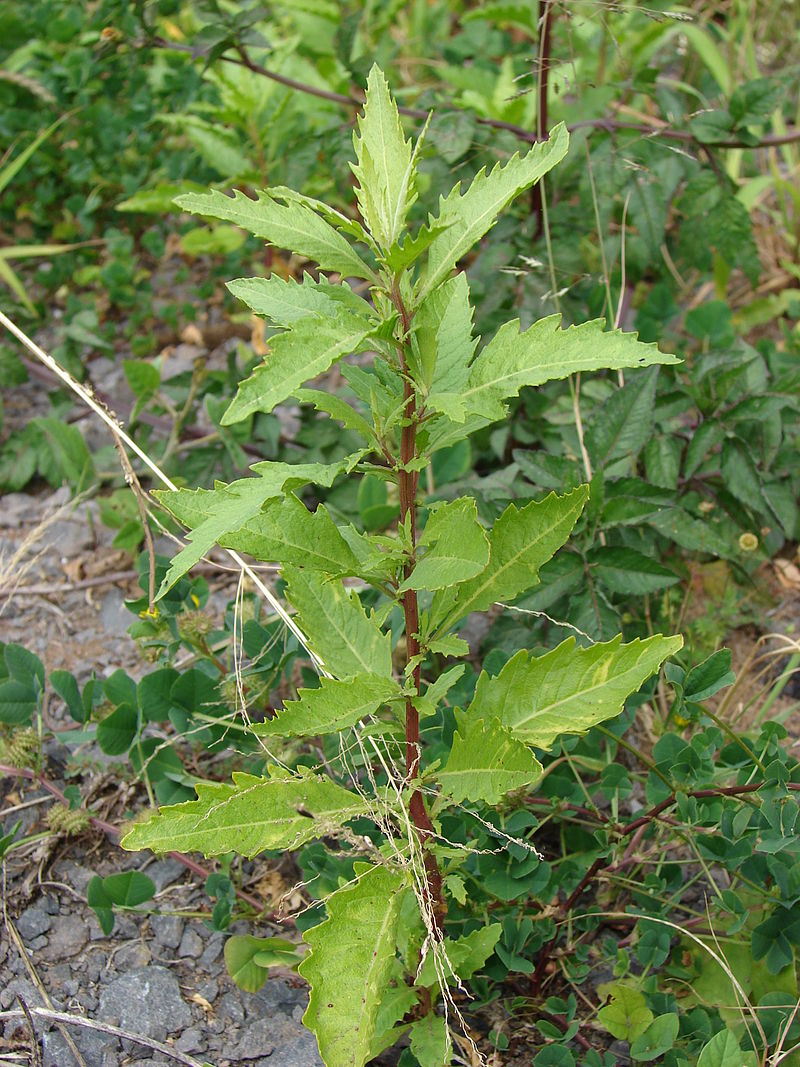
Epazote flowers are small and green.
Epazote (Dysphania ambrosioides) is a short lived perennial that is native to Central and South America. The name comes from the Nahuatl language. It means “plant”. It is a traditional culinary herb used mainly in bean dishes because it is believed to prevent flatulence. Its unique flavor is also welcome in other dishes such as tamales, enchaladas, mole, salsa, quesadillas and sopes. The scent has been described as a combination of citrus, mint and turpentine odors.
Use it sparingly in recipes. Not only can the flavor be overpowering, but the essential oil that gives it its flavor can be toxic in large quantities. Symptoms of overdose include vomiting, diarrhea and severe stomach pain.
Epazote can be used as a companion plant. Its essential oils contain terpenes which are natural pesticides.
Epazote is hardy in zones 4 through 12. The plants grow to 4 feet tall with red stems and green serrated leaves. They grow best in full sun but are not fussy about soils. They do just fine in poor soils. The flowers are small and green in color. They appear in the late summer and early fall.
The plants are easy to grow from seed. You can buy the seed or collect it from the plants in the fall. Once the flowers have died and the seed pods have dried, just place an envelope underneath the plants and rub the dried seedpods with your fingers. The seeds will readily fall into your envelope.

Epazote seeds can be harvested in the fall by rubbing the dried seedpods.
You can direct sow your seeds in your garden in the spring after the last frost and after the soil has warmed to 70⁰F. Surface sow them. Do not cover them because the seeds need sunlight to germinate. Germination should occur in 1 to 2 weeks. Thin your seedlings to 4 to 6 inches apart.
Alternatively, you can start your seeds indoors 4 to 6 weeks before your last frost. Surface sow them because they need light to germinate. Use a heat mat to keep the soil temperature at 70⁰F. Germination should occur in 1 to 2 weeks. You can transplant your seedlings outdoors after your last frost when the soil has warmed to 70⁰F. Plant them 4 to 6 inches apart in rows 12 to 18 inches apart.
You can begin harvesting from your plants when they have reached 6 to 12 inches in height. The leaves, flowers and stems can all be harvested and used. Regular harvesting will encourage more growth of the plants. Harvesting can continue right up until the frost kills the plants in the fall.
Don’t worry. Only the plant above the ground is killed by the frost. The roots will remain alive and produce new plants in the spring.

